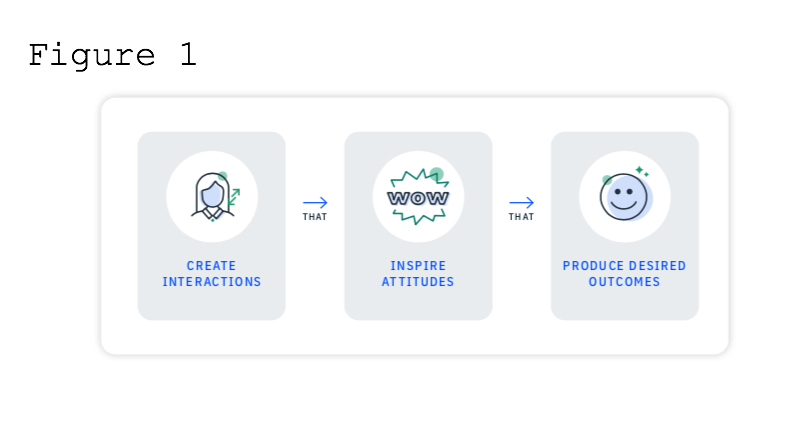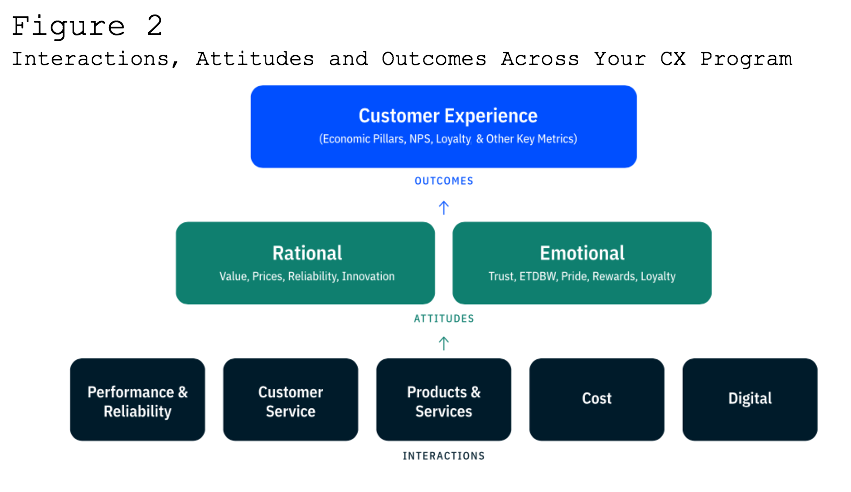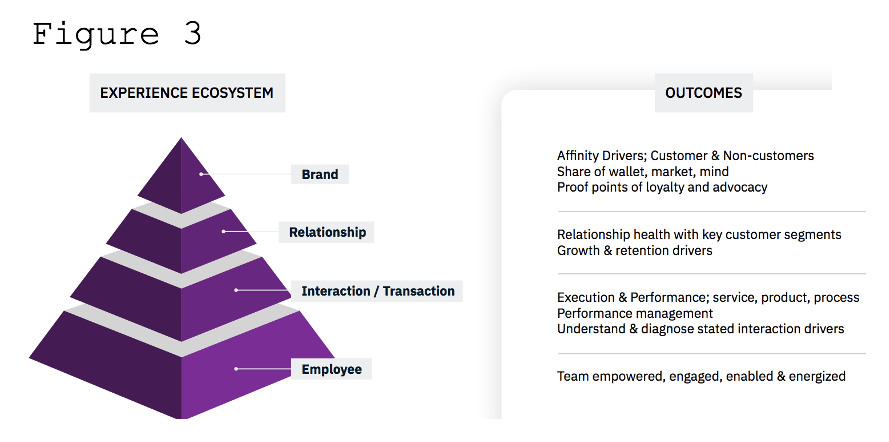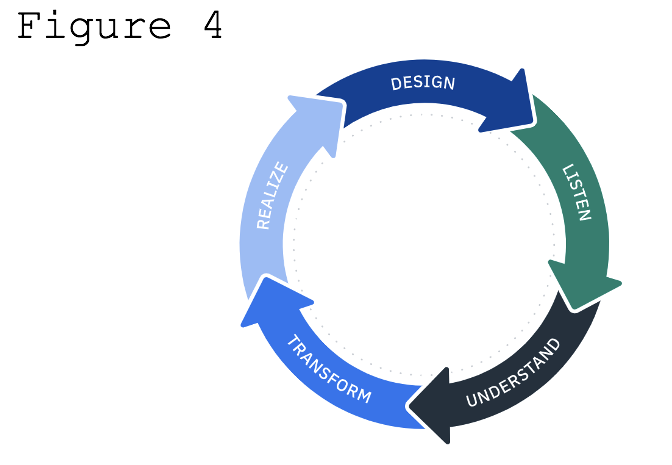How to harness the entire experience ecosystem and improve your company’s relationship with customers, employees and the overall market
Editor’s note: Graham Tutton is global head of consumer products and services at computer software firm In Moment, Utah.
There’s no understating the power of a single moment when it comes to a customer, employee or even a non-buyer’s overall experience with a brand. One exceptional interaction – or a particularly disappointing one – can mean the difference between a life-long relationship and defection.
The bad news? Negative experiences are inevitable. But if you leverage a powerful experience program that can ingest customer, employee, operational and market data – and then apply advanced analytics – you can predict and even alter the outcomes of everyday interactions in a way that helps you meet business goals.
Where social psychology meets customer experience
Let’s start at the very beginning. The goal of experience-minded individuals is to help organizations create interactions that inspire attitudes that ultimately produce desired outcomes.

This relationship is called the attitude-behavior relationship in social psychology, and experts have been researching and detailing this concept for decades. I’m sure there is a more scientific way to explain it, but here is the best basic explanation I’ve heard:
A snake bites you (negative interaction) > Snake = bad (negative attitude) > Run away from snakes (predicted behavior/ outcome)
Let’s think about this from a customer experience angle. Let’s say your business is retail apparel. A customer comes in looking for a special occasion outfit. They are immediately greeted by a helpful salesperson who asks about their reason for coming into the store and offers helpful advice. The customer finds multiple options, all available in their size, and leaves the store with a smile on their face and exactly the items they had in mind.
If we map this out according to the model above, the customer had an overwhelmingly positive interaction with your store, therefore, their attitude about your brand will be positive as well. They know they will find what they’re looking for and can count on your salespeople. As a result, you can bet that the next time they need some new clothes, they’ll come walking through your door. If you’re looking to encourage customer retention, this is a win. And if that customer tells their friends about you? That’s a customer acquisition win, too.
Creating a large-scale customer experience program
The previous example is one of millions of interactions your business is likely having with customers, so the next question companies ask is, “How do I apply this at scale with my customer experience program?”

Your CX program should be collecting data from countless daily interactions across your business. That data should include feedback about your products and services, costs and countless other things, but all of it describes the attitudes your customers have about those elements of your experience.
The attitudes customers generally fit into two buckets are:
- Rational: This product costs more than I’m willing to pay so my attitude is negative. Or, the service is reliable so my attitude is positive.
- Emotional: This brand is easy to do business with or gives me rewards with every purchase, so my attitude is positive.
And from that information about attitudes – negative or positive – your CX program can help you identify what drives customers to either fulfill your desired outcomes or not.
What do desired CX program outcomes look like?
Desired outcomes will look different for every business.
As mentioned in Figure 2, program goals could be as simple as achieving an increase in your brand’s Net Promoter Score or any other metric you use internally. Your desired outcome could also be to increase loyalty among your customers.
But these outcomes are largely experience-based. What about the goals you have that will fuel your larger business strategy to fulfill goals associated with your bottom line? Understanding how your interactions are influencing attitudes can help you influence those as well.
By breaking out the economic areas, you can influence:
- Customer acquisition. Understanding the market environment and changing consumer preferences.
- Customer retention. Addressing organizational or procedural issues that negatively impact customer experience.
- Customer growth. Identifying opportunities to expand loyalty and share of wallet within existing customer base.
- Cost reduction. Finding areas for achieving greater efficiency and profitability, and eliminating unnecessary elements.
Influencing customer experience outcomes
Customer experiences don’t exist in a vacuum. There are so many other elements that affect them. There are your employees, your transactions, products, services, the greater relationships you have and the way your brand is perceived.
This network is commonly referred to as your experience ecosystem. You have the power to understand the interactions within this ecosystem and influence attitudes and outcomes with your CX programs. Figure 3 takes a look at the outcomes you can influence across your experience ecosystem.

Each level of your ecosystem has its own set of outcomes it can produce, but each level can also influence the other. For instance, employees have an incredible effect on brand perception. If they are not trained to fulfill a brand promise and embody brand values, there is a risk that they will fail to fulfill a brand promise. However, if they are trained to be ambassadors of a brand, then they are going to best represent the brand to customers.
It’s vital to collect data from all of these levels of the ecosystem so you can get the intelligence you need to succeed. Put a framework in place that allows your experience program to collect data on interactions, the attitudes they produce and why, and ultimately tell you what actions to take to influence the outcomes.
Creating a successful CX program framework
While every experience program is different, a continuous improvement framework can help set up brands for success by measuring experiences and giving a path to try to improve them.

The continuous improvement framework consists of five steps that your organization can take to implement a successful experience program, regardless of where you are in your experience journey (launching a new program or refreshing a mature experience machine).
Let’s look at how each specifically speaks to the attitude-behavior relationship.
- Design: The first, and often most overlooked step, is to design your program with the end in mind – start your plans with the outcomes you want to achieve. If you want to increase loyalty, awesome. It’s also going to determine the listening posts you need to set up that will assist in identifying what drives loyalty, understanding how you’re delivering on those drivers and setting a course for actions that will help you meet your goals. At this step, you also need to decide how you will measure success according to those goals. Don’t just select a metric you’ve always reported on. Take care that you’re measuring according to your goals.
- Listen: Listening is the cornerstone of the classic customer experience program. Collect feedback from each area of your experience ecosystem (brand, interaction/transaction, relationship and employee). And I don’t just mean conduct surveys. Unsolicited data from social media or your call center can be the key to added intelligence.
- Understand: Once you have the data, it’s time to apply analytics to get to the why. Remember, it’s not enough to just measure how you’re doing. You have to understand why you’re doing well in certain areas and where you're falling short in others. Only after you analyze, interpret and translate data can you truly understand what’s driving customers toward – or away from – desired outcomes.
- Transform: Now it’s time to create and execute your action plan. If customers are churning because their favorite menu item has disappeared, who do you need to talk to get the item added back? Working with teams that are typically outside of the experience will be vital here. And be sure to close the loop with individual customers. Let them know how you’re taking action on the things they care about.
- Realize: This is the point in the process where you’re standing at the summit of the mountain. You’ve put in the work, you’ve achieved your goals according to the metrics you set in your design phase. Now it’s time socialize that success. Let the company know about the wins you’ve had. It’ll help you get buy-in for future projects. Again, don’t forget to let your customers know what you’re doing on their behalf. It lets them feel heard and appreciated.
I want to emphasize the continuous nature of this framework. These steps should be performed in a cycle. Don’t stop when you’ve realized your original goals, because by the time you’ve reached them, it’s likely you’ll have new challenges to tackle. Continue to reassess your experience, set new goals and realign your program accordingly.
Global athletic retailer combines customer and employee feedback
Let’s look at an example. A retail giant in athletic wear noticed a concerning problem in its stores. Customers were coming in and shopping, but not actually completing a purchase with them. This posed a serious issue for the company’s sales and customer satisfaction goals.
To get to the why behind this behavior, the company dove into feedback from both customers and employees. By applying analytics, the retailer discovered that the reason customers were walking out of stores was because the lines were so long. Potential buyers were discouraged by the wait times, so they put their items back.
Now that the retailer understood what was going on, it was able to realign management on scheduling, making sure there were enough employees working at popular times to serve customers quickly and efficiently. Customers were able to complete their purchases in a timely manner, and stores could meet their goals while making customers happy.
Own the customer experience moments that matter
When you harness your entire experience ecosystem, you are able to see through millions of interactions and pinpoint the ones that truly matter for your customers, employees, the market and your business. With the power of your experience program and a little social psychology, you’ll be able to understand the attitudes that drive behaviors and craft an action plan to influence your desired outcomes.
